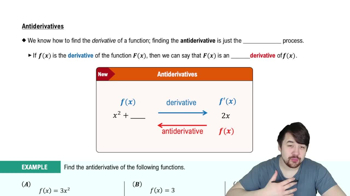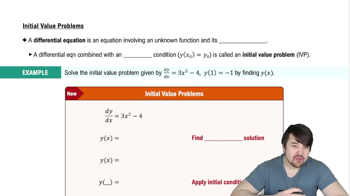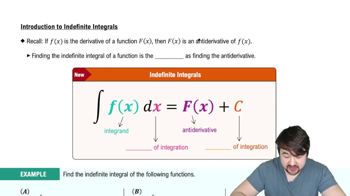Tolerance The height and radius of a right circular cylinder are equal, so the cylinder’s volume is V = πh³. The volume is to be calculated with an error of no more than 1% of the true value. Find approximately the greatest error that can be tolerated in the measurement of h, expressed as a percentage of h.
Table of contents
- 0. Functions7h 54m
- Introduction to Functions16m
- Piecewise Functions10m
- Properties of Functions9m
- Common Functions1h 8m
- Transformations5m
- Combining Functions27m
- Exponent rules32m
- Exponential Functions28m
- Logarithmic Functions24m
- Properties of Logarithms36m
- Exponential & Logarithmic Equations35m
- Introduction to Trigonometric Functions38m
- Graphs of Trigonometric Functions44m
- Trigonometric Identities47m
- Inverse Trigonometric Functions48m
- 1. Limits and Continuity2h 2m
- 2. Intro to Derivatives1h 33m
- 3. Techniques of Differentiation3h 18m
- 4. Applications of Derivatives2h 38m
- 5. Graphical Applications of Derivatives6h 2m
- 6. Derivatives of Inverse, Exponential, & Logarithmic Functions2h 37m
- 7. Antiderivatives & Indefinite Integrals1h 26m
- 8. Definite Integrals4h 44m
- 9. Graphical Applications of Integrals2h 27m
- 10. Physics Applications of Integrals 3h 16m
- 11. Integrals of Inverse, Exponential, & Logarithmic Functions2h 31m
- 12. Techniques of Integration7h 41m
- 13. Intro to Differential Equations2h 55m
- 14. Sequences & Series5h 36m
- 15. Power Series2h 19m
- 16. Parametric Equations & Polar Coordinates7h 58m
4. Applications of Derivatives
Differentials
Problem 38
Textbook Question
Finding Functions from Derivatives
In Exercises 37–40, find the function with the given derivative whose graph passes through the point P.
g'(x) = 1 / x² + 2x, P(−1, 1)
 Verified step by step guidance
Verified step by step guidance1
To find the original function g(x) from its derivative g'(x), we need to integrate the derivative. Start by setting up the integral of g'(x): ∫(1/x² + 2x) dx.
Break down the integral into two separate integrals: ∫(1/x²) dx + ∫(2x) dx.
Integrate each term separately. The integral of 1/x² is -1/x, and the integral of 2x is x². So, the antiderivative is -1/x + x² + C, where C is the constant of integration.
Use the given point P(-1, 1) to find the constant C. Substitute x = -1 and g(x) = 1 into the antiderivative: 1 = -1/(-1) + (-1)² + C.
Solve the equation from the previous step to find the value of C. Substitute this value back into the antiderivative to get the final expression for g(x).
 Verified video answer for a similar problem:
Verified video answer for a similar problem:This video solution was recommended by our tutors as helpful for the problem above
Video duration:
4mPlay a video:
Was this helpful?
Key Concepts
Here are the essential concepts you must grasp in order to answer the question correctly.
Antiderivatives
Antiderivatives, or indefinite integrals, are functions that reverse the process of differentiation. To find a function from its derivative, you need to determine its antiderivative. This involves integrating the given derivative function, which in this case is g'(x) = 1/x² + 2x, to find g(x).
Recommended video:

Antiderivatives
Initial Conditions
Initial conditions are specific values that allow us to find the particular solution of an antiderivative. Given a point P(-1, 1), we use this to determine the constant of integration after finding the general antiderivative. This ensures the function passes through the specified point, making it unique.
Recommended video:

Initial Value Problems
Integration Techniques
Integration techniques are methods used to find antiderivatives. For g'(x) = 1/x² + 2x, you can integrate each term separately: the integral of 1/x² is -1/x, and the integral of 2x is x². Understanding these techniques is crucial for solving the problem and finding the correct function g(x).
Recommended video:

Introduction to Indefinite Integrals

 5:53m
5:53mWatch next
Master Finding Differentials with a bite sized video explanation from Patrick
Start learningRelated Videos
Related Practice
Textbook Question
